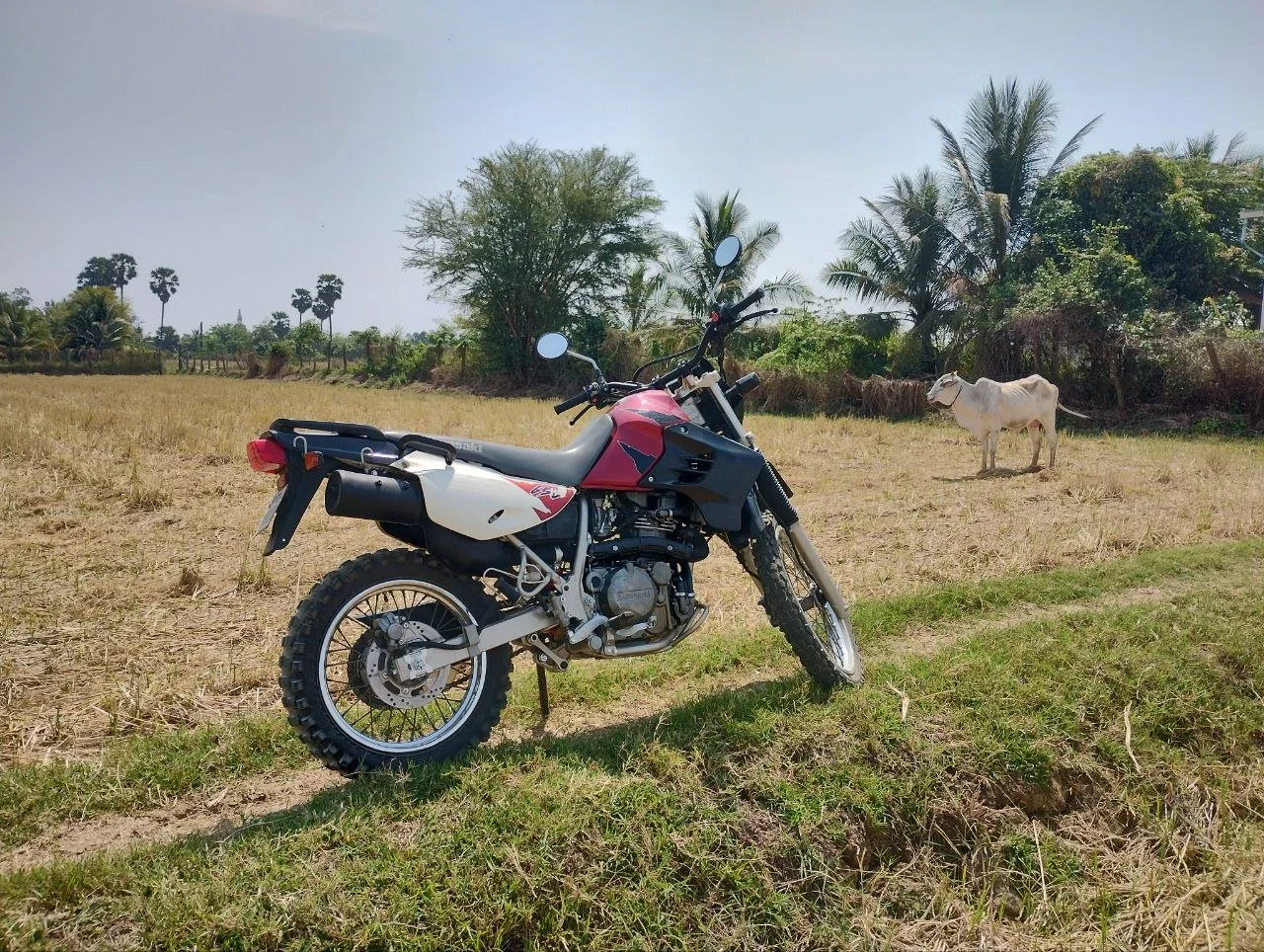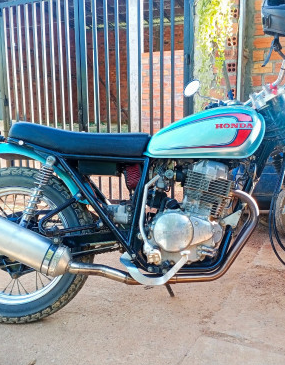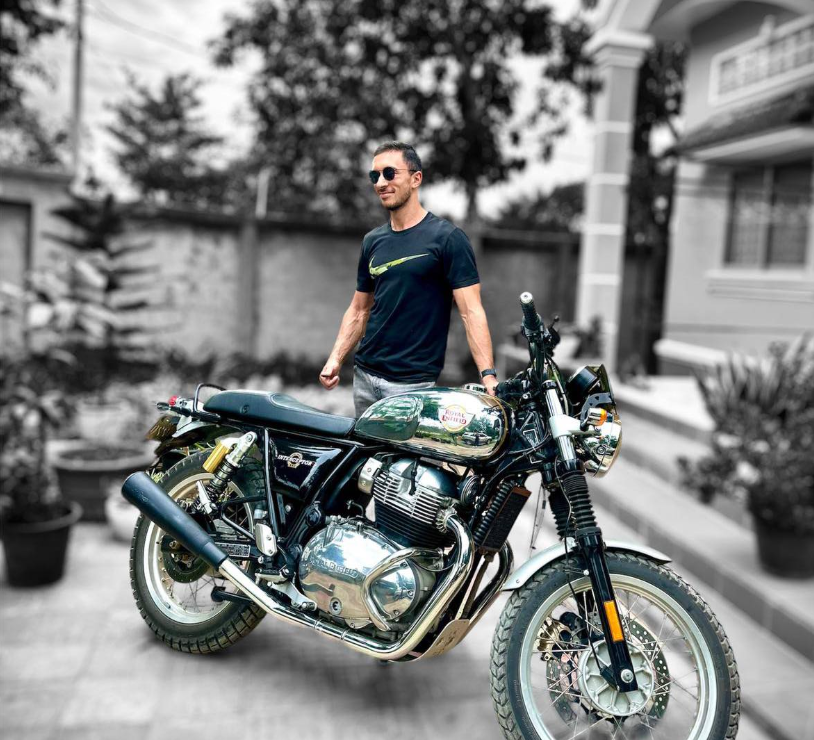A Technical Guide to Inspecting a Second-Hand Motorbike
An old KLR650 surviving the harsh climate of Cambodia
Purchasing a used motorbike offers great value, but a thorough inspection is crucial to avoid costly surprises. This guide provides an evaluation approach for all riders, focusing on key components and common issues.
The Walk-Around: Initial Feel is the Best
Observe the overall presentation. Well-maintained bikes show genuine care, not just a quick clean. Check paint consistency (variations/reflections hint at repainting after accidents). OEM parts and original appearance are good signs of no past accidents or abuse (e.g., a sportbike without fairings and replaced lights/handlebars/levers is a red flag). Look for fork seal leaks. Spotless, hard-to-reach areas suggest a meticulous owner.
Fuel System
Tank: Inspect inside for rust or dents. Rust damages components; dents can leak. Avoid any bike with a rusty tank.
Hoses & Petcock: Hoses must be pliable, not cracked or dry. Petcock (if present) must operate smoothly without leaks.
Intake & Fuel Delivery
Rubber Boots (Intake/Admission): Check for cracks/tears. Damage causes vacuum leaks, poor performance. Ensure no excessive vibration or visible movement when running (especially on big thumpers).
Carb/Throttle Body/Injector Area: Must be clean, no gasoline stains or strong smells. Leaks indicate compromised seals.
Modified CB400SS? It is either a gem or a junkyard collector!
Engine
Leaks: Inspect the entire engine for oil/gasoline stains (gaskets, seals, hoses). Small leaks worsen.
Cleanliness: Wary of "too clean and freshly resprayed" engines (potential hidden leaks). Normal grime is fine.
Compression: Vital for power. Low compression (worn rings, valves, head gasket) means costly repairs.
Informal (Exhaust Feel): With the engine idling, feel the exhaust (carefully). A strong, distinct pulse is good. A weak pulse or air "sucking back" can reflect a low compression.
Formal (Compression Test): Best done with a specialised tool to measure pressure per cylinder. Ask the seller for recent results or have a mechanic perform a test. Uneven cylinder readings are a red flag.
Exhaust System
Condition: Check for holes, cracks, gaps. Ensure the muffler is correct for the model (no unadapted parts). Rust is common, but significant rust-through is bad. A modified exhaust is sometimes a sign not of simple modification but a way to hide the marks of a slide on the former ones.
As part of your inspection, check the exhaust tip as well. If the residue is dry and sandy, it’s fine. If it’s oily or gooey, it could indicate engine trouble or burning oil.
Test ride your next Honda XR400 properly 😆.
Cold Start & Engine Run
Cold Start: Insist on it. Try to do the early morning start on location to see how it starts in that condition. The bike must start immediately (kick/electric).
Idle: Should be stable, no repeated stalling or erratic RPM.
Rev Response: After warm-up, throttle should rev smoothly, no hesitation, bogging, or significant backfiring.
Backfire: Minor deceleration pop is okay. Excessive/loud backfiring indicates air-fuel, ignition, or valve issues. A smooth, quiet engine is healthier.
Electrical System
Verify all components work:
Lights: Headlights (hi/low/pass), taillights, brake lights (front/rear), turn signals.
Horn: Loud and clear.
Dashboard: All warning lights/gauges illuminate, then turn off as expected.
Switches: All handlebar controls function smoothly.
Test Ride Dynamics
Handling: Bike should feel stable, track straight. Briefly remove hands (safely) to check alignment. If anything seems wrong in that department, ensure it's not just worn tires (worn tires don't allow for a good feel of the bike's behaviour).
Gear Shift: Smooth, precise, no clunking/false neutrals. Discern if any stiffness is a characteristic you need to adapt to for this used model, or a genuine defect. Grinding or persistent difficulty indicates potential clutch or transmission issues.
Vibrations: Some are normal, but excessive vibration from rolling parts suggests issues (unbalanced wheels, worn bearings).
Braking: Progressive, smooth, quiet. Noisy brakes (squealing/grinding) mean worn pads (check for at least 1.5-2mm thickness) or warped rotors (often felt as pulsing or a "diving" movement while braking). Spongy lever/pedal indicates air/fluid issues or missing brake fluid.
Post-Ride Assessment
A Beautiful Interceptor 650 and its proud owner
Confidence: Does the bike feel solid and well-maintained? Trust your instinct.
Avoid: Heavily modified ("Frankenstein") bikes, unknown history, or high mileage without records. High mileage can be fine with excellent maintenance. Verify mileage matches appearance.
Negotiate: Use identified issues to justify a lower price, providing estimated repair costs if possible. This demonstrates your homework and an informed offer. Avoid pushing too hard if the bike isn't truly worth it; numerous "cheap fixes" can quickly become a costly nightmare.
By following these detailed inspection steps, even without an extensive mechanical background, you can significantly increase your chances of finding a reliable and enjoyable second-hand motorbike. Lastly, ensure the model you're buying is practical for your local conditions; an exotic bike is fun, but better riding than gathering dust.
For further advice, tips, and connecting with local riders in Cambodia, consider joining the Mototom Cambodia Facebook group. Happy riding!




